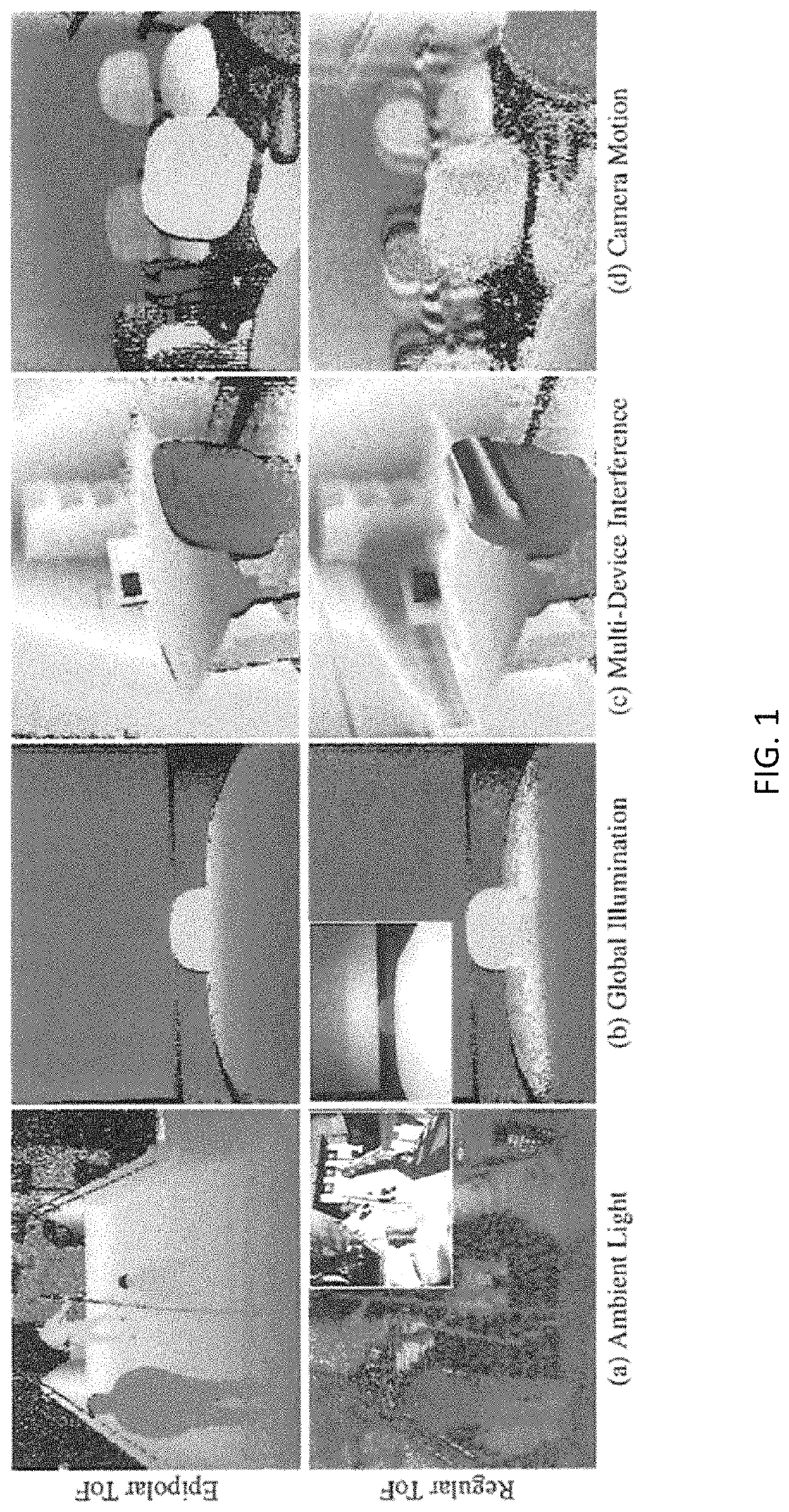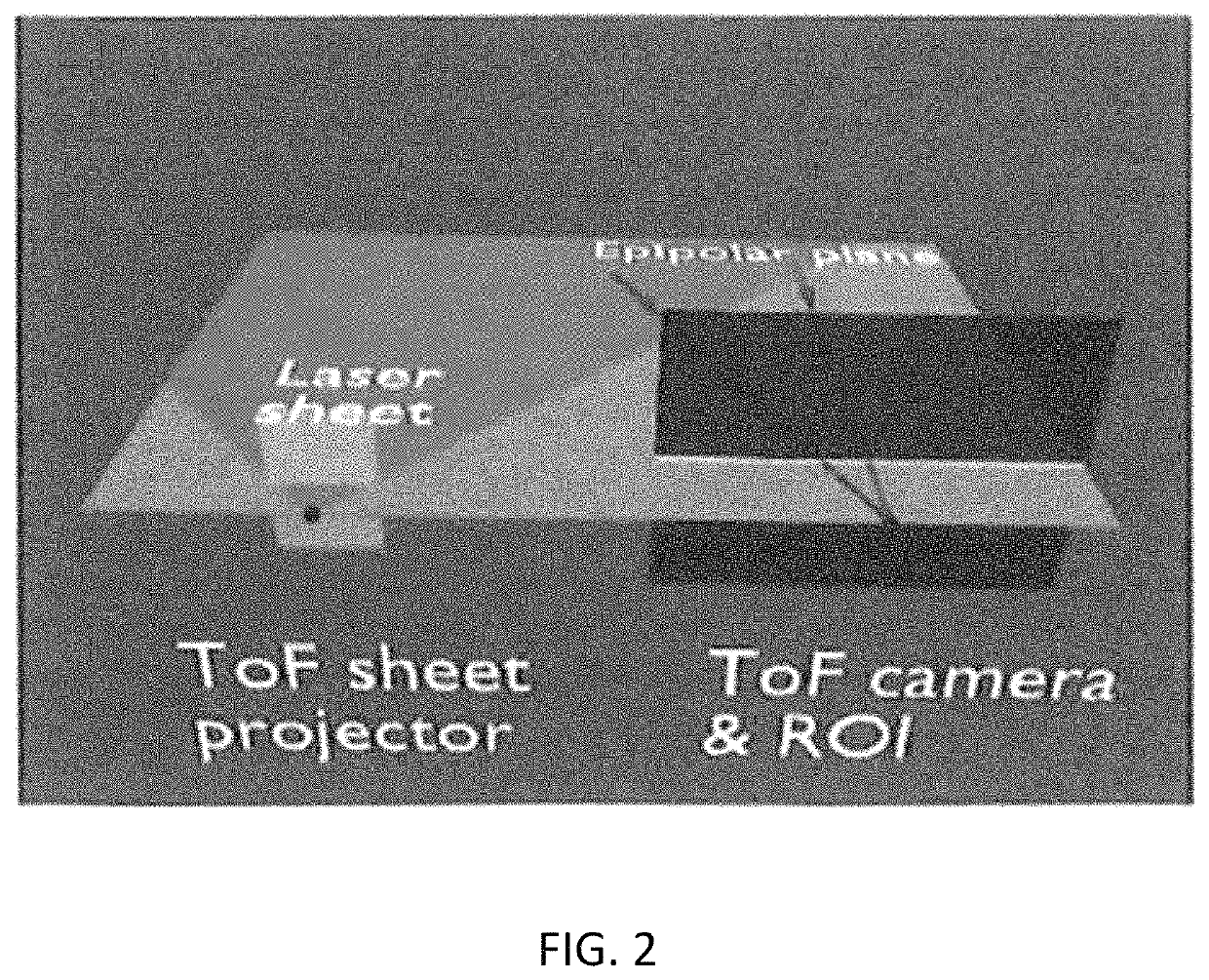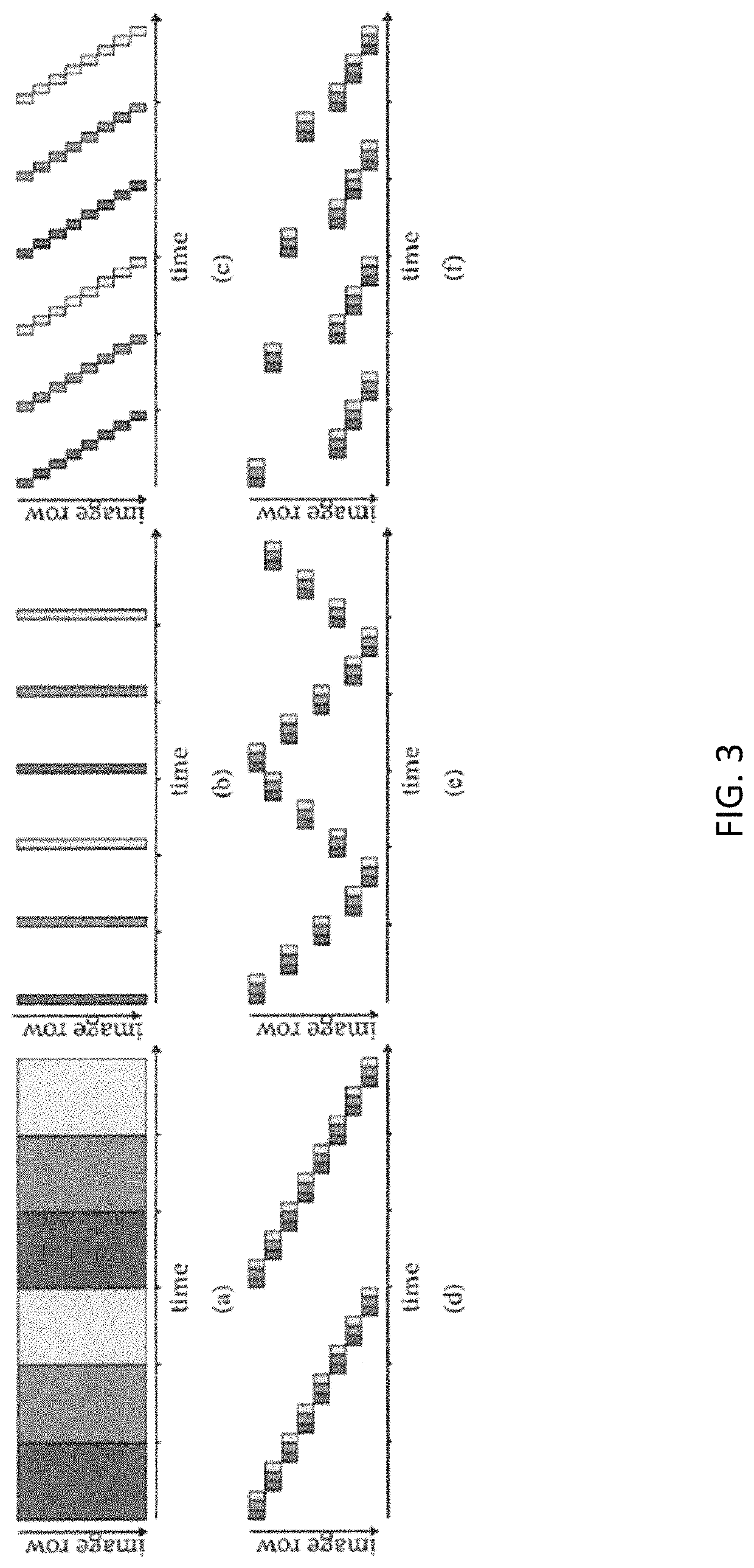Method for epipolar time of flight imaging
a flight imaging and epipolar technology, applied in the field of flight imaging methods, can solve the problems of photon noise, limited power consumption and eye safety considerations of cw-tof sensors, and low energy efficiency of cw-tof sensors, so as to minimize motion blur, minimize motion artifacts and depth errors, and avoid camera shake.
- Summary
- Abstract
- Description
- Claims
- Application Information
AI Technical Summary
Benefits of technology
Problems solved by technology
Method used
Image
Examples
Embodiment Construction
[0021]The term microcontroller, as used herein, may mean a dedicated hardware device, circuitry, an ASIC, an FPGA, a microprocessor running software, or any other means known in the art. It is further understood that the microcontroller will include connections to both the sensor and the laser light projector for sending control signals, and for receiving data. The invention is not intended to be limited to one method of implementing the functions of the controller.
[0022]As used herein, the terms camera and sensor are used interchangeably.
Continuous Wave Time of Flight
[0023]CW-ToF cameras use a temporally modulated light source and a sensor where the exposure is also modulated during integration. If the illumination modulation function is ƒωt=cos(ωt) and the sensor modulation function is gω,ϕ(t)=cos(ωt+ϕ) where ω is the modulation frequency in rad / s and ϕ is the phase offset between the source and sensor modulation functions, then the measurement at a pixel x is:
[0024]Iω,σ(x)=∫oTf...
PUM
 Login to View More
Login to View More Abstract
Description
Claims
Application Information
 Login to View More
Login to View More - R&D
- Intellectual Property
- Life Sciences
- Materials
- Tech Scout
- Unparalleled Data Quality
- Higher Quality Content
- 60% Fewer Hallucinations
Browse by: Latest US Patents, China's latest patents, Technical Efficacy Thesaurus, Application Domain, Technology Topic, Popular Technical Reports.
© 2025 PatSnap. All rights reserved.Legal|Privacy policy|Modern Slavery Act Transparency Statement|Sitemap|About US| Contact US: help@patsnap.com



